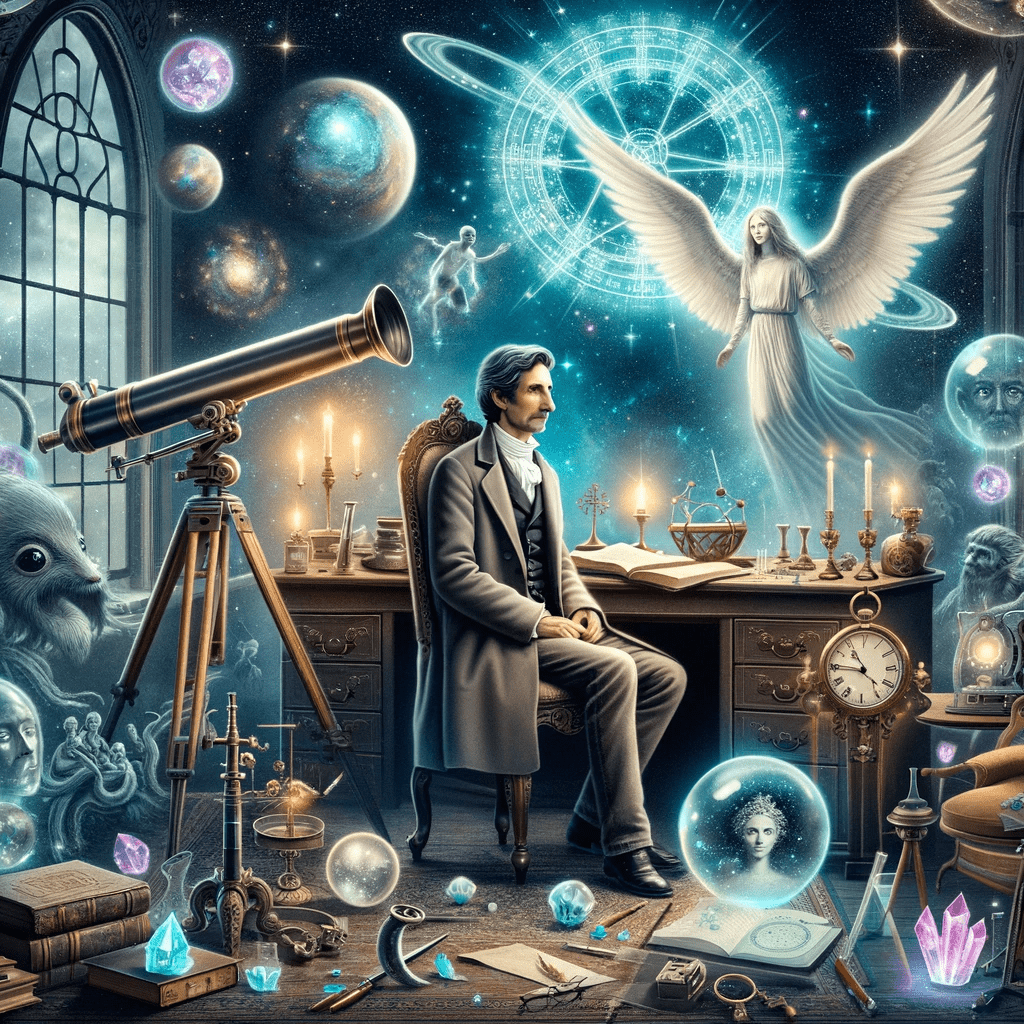Emanuel Swedenborg

Emanuel Swedenborg (1688-1772) was a remarkable figure, known for his multifaceted contributions to science, philosophy, theology, and mysticism. This polymathic individual left an indelible mark on various fields and is of particular interest in the context of discussions about Unidentified Aerial Phenomena (UAP) and Unidentified Flying Objects (UFOs).
Emanuel Swedenborg was born on January 29, 1688, in Stockholm, Sweden. He hailed from a prominent family, with his father being a bishop in the Swedish Lutheran Church. This early exposure to religious life had a lasting influence on him. Swedenborg received a solid education, studying at Uppsala University, where he engaged in a rigorous academic curriculum, covering a wide range of subjects. His studies included mathematics, astronomy, mechanics, and various natural sciences, laying the foundation for his future scientific endeavors.
Swedenborg’s professional life was diverse and prolific. He worked as an inventor and engineer, contributing to various mechanical and technical innovations of his time. His work on mining and metallurgy was particularly noteworthy. He designed and built several machines and devices, including an early submarine and a flying machine prototype, which can be seen as an early exploration of human flight, making him an early pioneer in aviation.
Emanuel Swedenborg’s connection to UAP and UFO phenomena is a subject of fascination and intrigue. It is important to note that his experiences predate the modern UFO phenomenon, but they contain elements that have drawn comparisons.
One of the most notable incidents occurred in July 1759 when Swedenborg was in London. According to his own accounts, he had an extraordinary experience in which he claimed to have made contact with beings from other planets. He described these beings as angelic and stated that they communicated with him about the nature of the spiritual world and the existence of extraterrestrial life.
Swedenborg’s accounts of his interactions with these extraterrestrial beings bear some resemblance to contemporary UAP and UFO reports. He claimed to have been transported in spirit to other planets and observed the landscapes and inhabitants there. While his experiences are more mystical and spiritual in nature compared to modern UFO sightings, they are often cited in discussions about early encounters with extraterrestrial beings or otherworldly realms.
Swedenborg’s contributions to various scientific fields were significant in their own right. Here are three unique facts about his scientific work:
- Theory of Nebular Hypothesis: In his scientific writings, Swedenborg proposed a theory known as the “Nebular Hypothesis,” which posited that planets and stars formed from the condensation of primordial matter. This idea laid the groundwork for later developments in the field of astronomy, including the work of Pierre-Simon Laplace, who expanded on Swedenborg’s ideas in the 18th century.
- Contributions to Crystallography: Swedenborg made important contributions to the field of crystallography. His work on the classification and study of minerals and crystals was ahead of its time and influenced subsequent research in the natural sciences.
- Inventions and Engineering: Swedenborg’s inventions, including a machine for cutting and rolling copper sheets, a method for constructing dry docks, and his aforementioned flying machine, demonstrated his keen engineering skills and innovative thinking.
Emanuel Swedenborg authored numerous works during his lifetime, spanning theology, philosophy, and mysticism. Some of his most notable books include:
- “Arcana Coelestia” (Heavenly Secrets): In this extensive work, Swedenborg looks into his theological and mystical insights, interpreting the spiritual meaning of the Bible.
- “De Caelo et Inferno” (Heaven and Hell): This book explores Swedenborg’s beliefs about the afterlife, the nature of heaven and hell, and the interaction between the spiritual and physical worlds.
- “Scientia De Coelo Et Inferno” (A Treatise Concerning Heaven and Hell): A shorter treatise expanding on the concepts introduced in “Heaven and Hell.”
Numerous books have been written about Emanuel Swedenborg, both as a historical figure and as a subject of interest in the fields of theology, philosophy, and mysticism. Some notable examples include:
- “Swedenborg: An Introduction to His Life and Ideas” by Gary Lachman: This book provides an accessible introduction to Swedenborg’s life, works, and the impact of his ideas.
- “Swedenborg: Buddha of the North” by D.T. Suzuki: Suzuki’s work explores the parallels between Swedenborg’s spiritual experiences and Eastern religious traditions, offering a unique perspective on his mysticism.
- “Swedenborg and Esoteric Islam” by Henry Corbin: Corbin’s book looks into the intersection of Swedenborg’s mystical experiences and Islamic mysticism, highlighting the transcultural dimensions of his thought.
Emanuel Swedenborg contributions to science, theology, and mysticism remain subjects of study and debate, and his unique experiences and writings have occasionally intersected with discussions about UAP and UFO phenomena, offering a historical perspective on the exploration of the unknown and the mysterious.


